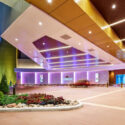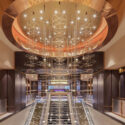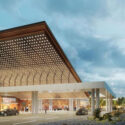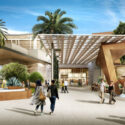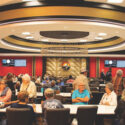Should one goal of the smaller casino be to “seem bigger,” or is it better to emphasize the intimacy or friendliness of a space?
That depends on the target market. YWS has been involved in projects in Las Vegas as well as other U.S. venues (commercial and Native American), and in Asia and Europe. Each of these markets has cultural and economic considerations. I think the most vital consideration is flexibility. As the saying goes, the only constant is change, and providing clients with flexibility is paramount. Many small casinos aspire to become larger, and that’s where a flexible plan creates an avenue for future growth.
If you do want a gaming space to seem bigger, how do you accomplish it? Is there a floor plan configuration that lends itself to a feeling of grandeur or size?
The configuration or shape of the casino is more important than size when designing any casino. However, there are ways to make a smaller venue appear bigger by utilizing compression techniques in the design so patrons feel that the space is bigger than it really is. You need to look at how the customer will experience the space and build anticipation, stimulate curiosity and create a sense of arrival. This is true whether you’re approaching the front door or coming out of a restaurant.
Do you have to scale down accoutrements (lighting fixtures, furnishings) in a smaller casino?
You can. This is just one of the ways that you can manipulate scale to make the space feel bigger, or smaller, depending on the client’s goals. Ceiling heights, and column placement and shape all have an impact on the perceived size of a space.
Is it helpful to use mirrors to “enlarge” a small space, or is that a hackneyed idea? Any colors or finishes that work better in a smaller space to accomplish a feeling of space and scale?
The traditional use of a massive amount of mirror is definitely dated; however, many designs still employ a selective amount of mirror used in creative ways to make a space feel larger or add interest. For example, mirror placed at the end of a vista will give the impression of the space continuing. Mirror intermixed with millwork or other materials can make a space look lighter and brighter and therefore larger. This is also true for lighter colors; a darker space will always feel smaller.
Does the ratio of gaming space to non-gaming amenities differ in a small casino?
Generally, the ratio stays pretty constant; the smaller the gaming facility, the fewer the amenities. The challenge is finding the correct amenities and placing them appropriately. Flexibility is again paramount; markets change and the design needs to be able to flex with the demands of the target market as well as be responsive to competition.
Can a small casino be competitive with its big brothers and sisters in the same market? Or is a small casino better on its own, with no competition?
This question really speaks to brand differentiation. What makes the smaller venue special? What does it do that the others can’t (or won’t)? If you identify and answer that, then, yes, absolutely you can compete with larger venues next door and even gain market advantage.






